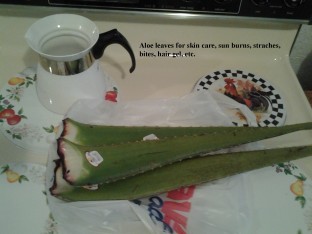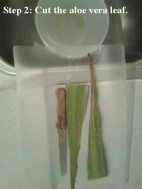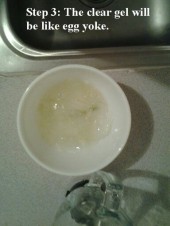I did it at the skate park. I was told to leave by some teenage d-bags that, “This is a boys only park, so get outta here.” This teenage boy’s brass balls snide remark irked me, for one. Secondly, it further goes without saying that skateboarding is still a “male” dominated past time and this will never change.
And third, it solidifies my previous feelings about this upcoming rude punk a$$ generation: they are raised by the internet, not their lousy parents. They have no respect, no morals, either.
Well, that’s just tough. I stayed and made my videos much to the irritation of those morons aiming a hand-held megaphone that was equipped with police siren effects and other annoying 💩 .
I cursed under my breath as I did a few laps on an empty basketball court. The NOS Rector pads felt okay, flexibility in them was amazing for being decades old. I didn’t put too much faith in my new mass-produced Chinese elbow pads since they do shift on my elbows.
I watched those never-will-be posers take their spills while attempting to grind rails, do verts on the metal half pipe portion. Ah, yes, the days of old– their skateboards went flying over the edge of the half pipes, but they never attempted to make a half-a-rat’s assets to practice, practice, practice their tricks. They just did it once, gave up and sauntered back to their picnic table.
Most of the time they were glued to their phones, seldom looking (nor doing) anything else. Their skateboards scattered on the ground like spilled Legos. Never in arm’s reach, never sat upright, either.
No audible conversation at all amongst them. I found it odd that they were so pre-consumed by their cell phones and didn’t bother to provoke me anymore. One of the boys very lazily strode to the highest half pipe; put the megaphone on police siren aimed in my general direction and returned to his lazy pack. And this is supposed to irritate me that I give up and leave? Ha! Such ineptness.
There was just too much immaturity running amuck that it made me wonder why I got out of bed on my day off? Oh, yeah, right. I wanted to test out my NOS gear, plus skateboard around (cruise) on my new deck to break it in more and see how it preforms on different concrete. Maybe pull a few front nose fakies. I never said I was ever going to attempt these with a devil-may-care attitude. I take my time, I take it slow since I know my limitations and don’t go beyond those unless I feel confident doing so.
My outing on this beautiful, albeit humid, sticky, gross heat of midday wasn’t all for naught. I brought my other “go-to” board “weeble wobble”. Yes, I will adjust those king pins to remedy this issue all skaters encounter. I’m still in my ‘shake down’ period right at the moment and figuring out what works and what doesn’t.
The best gear I know and love will always be Rector. It fits very true to size and won’t shift. The size smalls run very small, mind you. This is fine by me, but may not work for the next person. My helmet probably pre-dates 1985, and it’s light weight. My gloves are all new old stock. I ditched my long board gloves since the size small/medium were WAY too big on my hands. I never wanted anything new again.
I made myself have fun on this hot day. I slid down the metal half pipe; remembering my old practice runs from back in the day. The metal was screaming hot and on bare skin… Ouchy! Woo-hoo!!! Alrighty then…
Keep in mind that the city planners were idiots when this skate park was built. The metal half pipes can be ridden, however, its sheet metal meeting a not-so-level slab of concrete. The metal has a lot of questionable “give” and does produce a creepy, unsettling loud ‘ping’ sound as the wheels make contact with its surface. So skateboarders beware. I say take caution when attempting to ride this to all skateboarders, not just newbies. I caution the seasoned, the intermediates, etc. There are no plywood half pipes. When I first took up skateboard 30 some odd years ago, I learned on plywood, even helped my oldest brother in the final construction phase of his first half pipe. It was a real learning experience, very grueling hard work, and once completed– very scary, yet exciting and exhilarating to be the first to test it out.
Nowadays, I take my skateboarding slow. I’m not about to risk a bone fracture by skateboarding at break neck speed. My attempt at front nose Fakies are taken with cautious approaches. I’m there to get the feel of both board, wheels, and terrain underneath my feet. What do I need to correct on the hardware, if any adjustments need to be made? That kind of assessment. And its all about having fun within one’s own ability.
I stood atop a massive slab of steep concrete that jutted out of the pavement like a pyramid with the point left unfinished. I’m not here to be grammatically correct with any skateboard terminology, by the way. I’m trying to describe the skate park layout. There are tiny rails anchored into the pavement. I view it as another accident that could mangle beginner or even intermediate since they were placed too damn close to the proximity of each half pipe. I’m observing as a spectator and an old-school skater.
I watched the lazy punks take many spills. There popsicle decks went skiddering, the wanna-be skaters tripped head over heels every time. They skated poorly like something out of Skater 3, a video game. I wouldn’t have even put them in a poser category nor even beginner. Perhaps a weekend warrior at best. There was no true form nor unique style all their own that I could see. They sported tattoos and smoked cigarettes. They rode the half pipes with no zeal. There wasn’t even any ounce of passion. It was like bland nothing-ness. Almost giving off a ticked off message to the world that they didn’t want to skateboard, but did so anyway just out of boredom, perhaps.
It was like watching a dull skateboard follies without a laugh track nor any blooper sound effects. They just went up the half pipes without any real sense of feeling. There was none of this: “I’m awesome!” or “Look at me!” And there was zero sense of “practice makes perfect” attitudes nor even any positive energy, either. To me, that was very odd. In my day teenagers couldn’t wait to out-best their friends or try to impress them, either. Teenagers of my generation took a tumble, jumped up, and kept trying it over and over again until they felt they got their tricks partially correct to their liking. But I see none of this in today’s youth, nothing but this massive laziness boredom. And god-forbid if their Ipads or cellphones just quit working due to some cosmic solar interference, they’d have a snowflake meltdown and need to find their “safe” place.
Teenagers in my day would have thrown their non-working cell phone or Ipad in the street and went on their way regardless of what caused it to quit working. They might have retrieved said device later if their parents made them, other than that, an 80’s teenager was vastly different to this generation. And I’m sure the generations of teenagers before my time might have taken similar approaches to modern technology, perhaps.
I didn’t detect angst, per se from the lazy teenage boys at the skate park. I mainly sensed it was for them just killing time between texting their friends, like something to do to pass the time before they had to head home before another school day rolled around.
I wish I could have “shredded it” as one older male with long hair cheered me on as I strode over to the skate park looking like a throwback of a typical early 80’s skateboarder. I gave the long-haired older dude a warm smile in return, nodding in approval, and gave him a ‘thumbs up’. My old Rector gloves linger with the new leather scent, “fresh out of the bag” newness/ Saddle soap treatment. All is awesome applesauce on this day and I don’t let the snide remarks deter my determination to stay at the skate park. 🙂
My old stock Rector pads lovingly shed their black lining like an affectionate cat. I remedied the sticky rub-off with non-GMO cornstarch and aluminum-free baking powder before I left the house. I figured it would also combat chaffing and sweat build-up.
I ignored the teenage village idiots seated at the picnic table. I practiced my falls, sliding on my knees, just having fun again that I hadn’t got the chance to have in many, many years.
I didn’t try any dismounts since I was putting the old pads through their first ever durability test runs. I felt no unpleasant jarring aftershocks striking concrete and metal. In fact, my knees were cushioned the whole time and comfortable.
Concrete though isn’t a good sliding surface, by the way with pads. The metal will scorch skin and that’s the only thing that burned. Otherwise, Rector pads get two thumbs up 👍. And that’s my initial critique on the new old stock gear. I never tried out the Clawz gloves yet since these were probably first generation designed for the second generation of skateboarding in 1989-90. They were for street skating, but do not have any full wrist support at all. The only minimal support (if one can call it protection) is a Velcro wrist wrap design. I used one Clawz glove back in the day without a thought that there was really no wrist protection at all. These were made of suede leather, minimal pads sewn on the palms, top leather with Clawz logo sewn into the glove. The Clawz logo is prone to cracking as with anything vintage and being thirty years old is to be expected.
Also, eBay is an excellent source to find a lot of vintage skateboard stuff at reasonable prices. Depending on the seller(s), they may even offer best offers and free shipping within the United States. Hope this helps. I’d also include Amazon as another online buying source for skateboard related stuff, but I find that eBay is vast and has more to chose from.
Just a word of advice buying on eBay: always try to review seller’s feedback rating. If they have a ton of negatives, I’d recommend shopping with another seller since you may (or might not) get the item(s) you purchased on there. And its a let down, believe me when the item you work hard for never shows up in the mail. It happened to me recently with a couple of rock n’ roll trading cards, although the seller was very quick to issue a refund, I was searching for the cards for last couple of years. So, it just a matter of buyer beware on eBay. It’s still a good place to find anything you a person could ever possibly want/need/ add to an existing collection, etc. The selling aspect would be saved for another blog entirely.
Thanks for liking, blogging, following and sharing. And please, stay tuned for more future posts from me when I can find the time to do so. Have a great day everybody and happy skateboarding! 🙂
By the way, have any skateboard related questions? Please, feel free to send me a comment on here and I will be happy to respond to the best of my knowledge. Mind you that I don’t know a whole lot about how to do skateboard tricks and I’m still learning myself even after all these years. I have very minimal skateboard mechanics under my belt (self-taught), but I do try. I am a very old-school fashioned skateboarder though. 🙂








You must be logged in to post a comment.